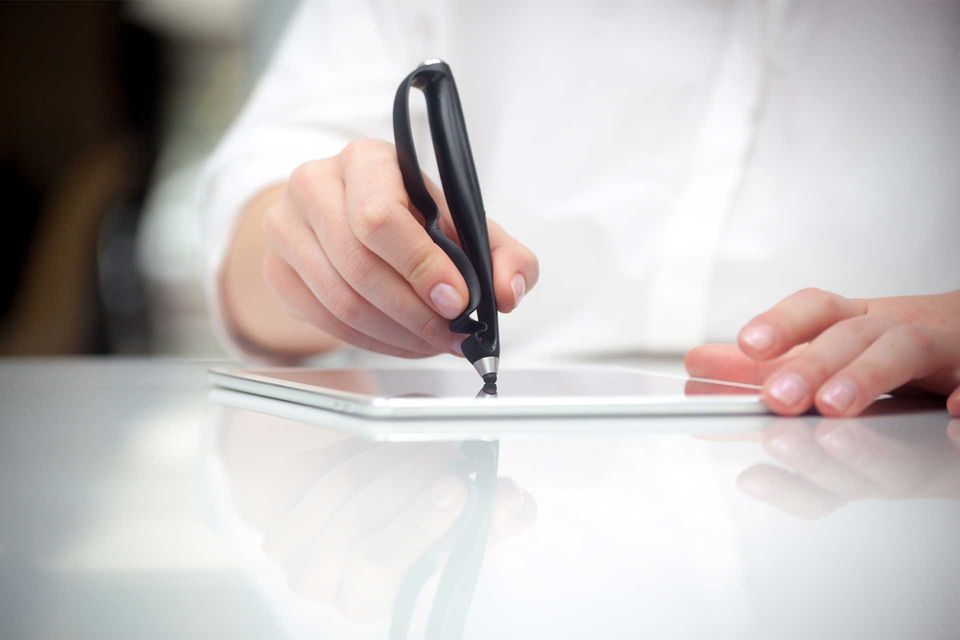Brain-writing: Sketch Down Your Ideas
February 26, 2020
What is Brain-writing?
If you work as part of a team, you may have meetings or talks where research and ideas are presented to the other members. New ideas may emerge out of this brainstorming meeting. These meetings can often impede some great ideas from coming forth. As everyone tries to get their ideas or questions in, you may forget what you were going say. Or the conversation gets sidetracked down one way of thinking and another interesting avenue is left unexplored.
We can avoid this with brain-writing. This is simply the process of everyone in a group sharing and building on ideas by silently writing them down. And you don’t just have to use words. Some ideas can be drawn or sketched out to better explain. No one has to be an award winning artist; as long as they idea is communicated the drawing is successful.
Brain-writing is great if you have a ground that is too large for a traditional brainstorming session. For instance, in a conference of 300 people it is difficult to get everyone’s opinions heard unless you organize it in a brain-writing type fashion. Brain-writing is also great if you have quiet people in your group who are intimidated by large, loud discussions, if you are short on time, or if you want to put an emphasis on having all voices heard and not just the most assertive people in the group.
What are the benefits of Brain-writing?
With brain-writing, you can
- Speed up the process. Brainwriting means many ideas can be generated in a short period of time.
- Make the process easier. There is no facilitation needed with brainwriting.
- Save money. Instead of bringing everyone together for a conference and wasting time and money, you only need paper, cards and pens.
- Work in quiet. With writing only, no one is talking and it’s often easier to focus.
- Include everyone. Not everyone has a type-A personality and is good at making themselves heard. Shy or naturally quiet people can contribute just as much as anyone else.

How do you implement Brain-writing?
There are lots of different methods of brainwriting that you can use in a research or brainstorming group.
6-3-5 Brainwriting is when you have 6 participants, 3 ideas and 5 minutes. Each person has to write down 3 ideas on a piece of paper. Set a timer for 5 minutes. When time is up, each person passes their paper to the person beside them and that person builds on those ideas. You can do this for 30 minutes for 108 new ideas.
If you’re looking for a more relaxed format, you can write on cards and eliminate the timing aspect of the option above. Each person writes their ideas on a card and passes it around. Ideas can flow more freely as each person takes as long or short as they need to build on the idea on the card.
There are many other methods including brain-writing in the lab, gallery method, and any variation that works for you and your team.
Articles

In the period since COVID forced many of us back home and out of the office, remote work has become the new norm for many. The flexibility of working from home, especially for those with small children, is very compelling, but making a productive workspace is more than setting up a desk in the spare room. More people are seeking to create functional and comfortable workspaces in their homes, however, it can be difficult to strike the right balance between a professional office space and a cosy home environment. Here are some tips for designing a home workspace that meets both of these needs: Dedicate a specific area for work Designating a specific area for work is essential for separating work from leisure time. This could be a separate room or just a corner of a room. It is important to make sure that the workspace is free from distractions and clutter, as this will help you stay focused and productive. Choose the right furniture Ergonomic furniture is key to a comfortable and productive workspace. Invest in a comfortable chair, a desk that is the right height, and a good-quality mouse and keyboard. If you are prone to back pain, consider a standing desk. Add personal touches Just because your workspace should be functional, doesn’t mean it can’t be personal. Add photos, plants, and other personal items to make the space feel like your own. This will help create a sense of comfort and make you feel at home in your workspace. Good lighting Good lighting is essential for a comfortable workspace. If possible, place your desk near a window for natural light. If not, invest in a high-quality desk lamp to provide bright, even light. Keep it organised An organised workspace will help you stay productive and focused. Use desk organisers, filing cabinets, and other tools to keep your work area free from clutter. A clean and organised workspace will also help you start each day with a clear mind. Consider your work style Think about the type of work you do and how you like to work. If you prefer a minimalist workspace, opt for a simple desk and a few basic supplies. If you need space for multiple screens and other technology, make sure you have enough room to work comfortably. Take breaks It’s important to take breaks throughout the day to avoid burnout. Step away from your desk, go for a walk, or do some stretching exercises to clear your mind and recharge.









